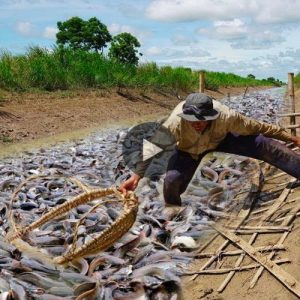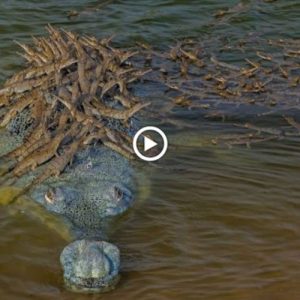A team of scientists, photographers, conservationists, and local guides embarked on a four-month-long expedition into a little-explored part of the western Amazon to find a rare monkey species, the Vãzolini saki. Led by Laura Marsh, a primatologist at the University of Central Florida, the team set sail in a small, two-story houseboat up the Eirú River, near Brazil’s Peruvian border.

The Vãzolini saki is a unique species of monkey that has eluded researchers for years. Marsh has spent years researching the taxonomic structure of the Pithecia group of saki monkeys, but until now, she lacked any photographic evidence of the Vãzolini saki, which she says is distinguishable from other species by its unique physical appearance.
The team intended to document and explore the biodiverse landscape, but finding the Vãzolini saki remained at the forefront of their mission. After years of anticipation, Marsh finally saw the monkey and burst into tears. “It was fantastic,” she said in a phone interview with National Geographic. “I was trembling and so excited I could barely take a picture.”
The Vãzolini saki was first documented in 1936 by Ecuadorian naturalist Alfonso Ollala during an expedition through the area. They were seen again in 1956 during an expedition that also collected dead specimens. However, the species has remained elusive, and Marsh’s team’s discovery is a significant breakthrough in understanding the monkey’s behavior and habitat.

The expedition was not without its challenges. The team faced treacherous rapids, dangerous wildlife, and the threat of illegal logging and mining in the area. However, their efforts paid off, and they were able to capture stunning photographs and videos of the Vãzolini saki in its natural habitat.
The discovery of the Vãzolini saki is a reminder of the importance of conservation efforts in the Amazon rainforest. The region is home to an incredible array of biodiversity, but it is also under threat from deforestation, climate change, and human activity. Marsh and her team’s discovery highlights the need for continued research and conservation efforts to protect the Amazon’s unique wildlife and ecosystems.
In conclusion, the discovery of the Vãzolini saki is a significant breakthrough in understanding the behavior and habitat of this elusive monkey species. Marsh and her team’s expedition highlights the importance of continued research and conservation efforts in the Amazon rainforest to protect its unique biodiversity.






